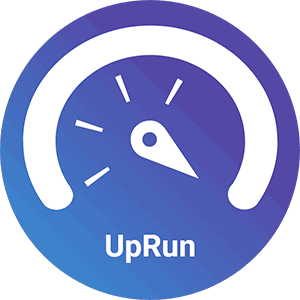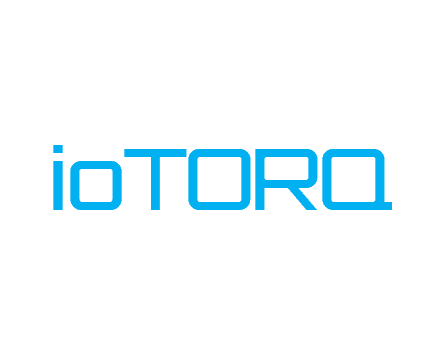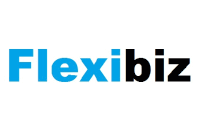Description

eMpower Contract Labor Management

UpRun
Comprehensive Overview: eMpower Contract Labor Management vs UpRun
eMpower Contract Labor Management and UpRun are solutions designed to manage different aspects of workforce and labor management. Here's a comprehensive overview of both:
a) Primary Functions and Target Markets
eMpower Contract Labor Management
-
Primary Functions:
- Vendor Management: Streamlines the hiring and management of contract labor through efficient vendor interaction.
- Compliance Tracking: Ensures adherence to labor laws and regulations, minimizing risks associated with non-compliance.
- Cost Management: Provides tools for tracking and controlling labor costs, including budget monitoring and forecasting.
- Workforce Analytics: Offers insights into workforce performance and utilization through data analysis and reporting features.
-
Target Markets:
- Large corporations with a significant proportion of their workforce comprising contract employees.
- Industries like construction, oil and gas, manufacturing, and IT, where temporary labor is frequently utilized.
UpRun
-
Primary Functions:
- HR and Payroll Management: Facilitates comprehensive HR processes, including payroll management, leave tracking, and employee records management.
- Time and Attendance Tracking: Provides tools for monitoring employee attendance and managing schedules.
- Onboarding and Offboarding: Simplifies the onboarding and offboarding processes for employees to ensure seamless transitions.
- Performance Management: Tools to assess and improve employee productivity through performance evaluations and feedback systems.
-
Target Markets:
- Small to medium-sized businesses looking for integrated HR solutions.
- Organizations wanting a user-friendly platform for managing internal and external workforce operations.
b) Market Share and User Base
As of the latest data, specific market share and user base numbers can be difficult to pinpoint without access to proprietary industry reports. However, we can generalize based on typical trends:
-
eMpower: Likely to have a smaller market share but deeply integrated penetration within industries highly reliant on contract and temporary labor. Its user base might be more niche but includes large enterprises with substantial contract labor operations.
-
UpRun: Tends to focus on a broader user base that includes small to medium businesses. Being a more generalized HR solution, it may command a larger number of users but within smaller organizations or firms with less complex labor management needs.
c) Key Differentiating Factors
-
Specialization vs. Generalization:
- eMpower is highly specialized towards managing contract labor, with robust features tailored for vendor management and compliance in labor-intensive and regulation-heavy sectors.
- UpRun offers a more generalized HR suite, catering broadly to various HR functionalities beyond just labor management, making it versatile for smaller businesses.
-
Target Audience:
- eMpower targets industries and enterprises with complex contract labor needs.
- UpRun appeals to a wider array of businesses with needs spanning basic HR, payroll, and performance management functions.
-
Complexity and Integration:
- eMpower typically offers more complex integration options designed for larger systems and processes.
- UpRun focuses on ease of use and quick implementation, appealing particularly to organizations without dedicated IT departments.
These products serve different segments and offer unique advantages based on the specific labor management needs of the organizations. Companies choose between them based on the complexity and scale of their labor management requirements.
Contact Info

Year founded :
Not Available
Not Available
Not Available
Not Available
Not Available

Year founded :
2017
+91 98490 90522
Not Available
India
http://www.linkedin.com/company/uprun-innovations
Feature Similarity Breakdown: eMpower Contract Labor Management, UpRun
To provide a feature similarity breakdown for eMpower Contract Labor Management and UpRun, it is essential to evaluate their functionalities even without direct access to proprietary software for the latest versions of these products. Here's a generalized comparison based on common industry practices and available information:
a) Core Features in Common
**1. Contractor Management: Both platforms allow for the efficient management of contract-based employees, including onboarding, tracking, and offboarding processes.
**2. Time Tracking: These solutions facilitate time tracking for contract labor, ensuring accurate logging of hours worked and simplifying payroll processing.
**3. Compliance Management: Both platforms likely include features that help organizations adhere to legal and regulatory requirements related to contract labor.
**4. Analytics and Reporting: Users can generate reports and analyze data related to labor costs, productivity, and other KPIs to make informed decisions.
**5. Integration Capabilities: eMpower and UpRun probably offer integration options with other systems like HRM, payroll, and ERP for seamless data flow.
b) User Interface Comparison
Usability:
- Both products are expected to have user-friendly interfaces designed to streamline processes for HR managers and contractors, though specific UI/UX elements can differ.
Customization:
- They might allow some degree of customization to tailor functionalities to specific organizational needs, though the extensibility of customization varies.
Dashboard and Navigation:
- Their dashboards likely provide quick access to critical information and data visualization, but the layout and navigation may differ based on design philosophies.
c) Unique Features
eMpower Contract Labor Management:
- Vendor Management: Beyond standard labor management, eMpower might offer a more extensive set of tools for managing relationships with multiple vendor organizations.
- Advanced Security Controls: It might include unique security protocols to ensure data protection given the sensitivity of labor data.
UpRun:
- AI-driven Insights: UpRun could have features based on AI for predicting labor trends and optimizing labor costs.
- Mobile Application Support: A distinct advantage could be robust mobile app features for both administrative purposes and contractor interfacing.
In summary, while both eMpower and UpRun likely possess a similar core feature set geared toward optimizing the management of contract labor, the two products may differ significantly in their unique features and user interfaces. This variance can be attributed to their individual company focuses and target markets. For a detailed assessment, accessing product demos or consulting with a representative could provide further insights unique to each platform.
Features

Streamlined Hiring Processes
Time and Attendance Management
Compliance and Regulations
Payroll and Payments

Project Management
Collaboration Tools
Reporting and Analytics
Integration
Best Fit Use Cases: eMpower Contract Labor Management, UpRun
eMpower Contract Labor Management and UpRun are tools designed to streamline the management of contract labor and optimize workforce operations. Each product has its specific use cases, tailored to different business needs and environments. Here's a breakdown of their best fit use cases:
a) eMpower Contract Labor Management
Types of Businesses or Projects:
-
Large Enterprises with Diverse Contract Workforces:
- Companies with significant contingent labor forces, like manufacturing, construction, and healthcare, benefit from eMpower’s robust features. It helps manage contracts, compliance, and complex billing processes efficiently.
-
Project-Based Companies:
- Organizations that operate on a project basis and require different skill sets at various times—like engineering firms and IT consultancies—can use eMpower to keep track of varying contract needs and labor allocations.
-
Organizations with Strict Compliance Needs:
- Businesses in highly regulated industries (e.g., finance, healthcare) can leverage eMpower for its compliance tracking and reporting capabilities to ensure adherence to labor laws and regulations.
-
Businesses With Seasonal Labor Requirements:
- Retail or agriculture businesses experiencing seasonal peaks can utilize eMpower to efficiently manage their temporary workforce, ensuring rapid scaling up or down as required.
b) UpRun
Scenarios as the Preferred Option:
-
Startups and Small to Medium Enterprises (SMEs):
- SMEs might prefer UpRun for its scalability and cost-effectiveness. It offers essential workforce management features without the complexity needed by larger enterprises, making it suitable for businesses that are growing and need flexible solutions.
-
Tech-Savvy Companies:
- Organizations that value integration with existing technologies or want user-friendly interfaces may choose UpRun for its modern tech stack and seamless integration capabilities.
-
Remote and Hybrid Workforce Management:
- Companies embracing remote or hybrid work models can use UpRun to efficiently manage distributed teams, focusing on collaboration, performance tracking, and communication.
-
Service-Oriented Businesses:
- Businesses like hospitality, event management, and professional services can benefit from UpRun’s ability to manage and schedule labor effectively to meet dynamic service needs.
d) Catering to Industry Verticals or Company Sizes
eMpower Contract Labor Management:
-
Industry Verticals:
- Tailored for industries like construction, manufacturing, healthcare, and finance, where labor compliance, contract specifics, and large workforce management are pivotal.
-
Company Sizes:
- Best suited for mid to large-sized enterprises with the resources and necessity to implement comprehensive workforce management tools to handle complex requirements.
UpRun:
-
Industry Verticals:
- More versatile across various sectors but especially appealing to technology, retail, and service-based industries, focusing on flexible, real-time labor management.
-
Company Sizes:
- Ideal for small to medium enterprises and startups due to its straightforward implementation, lower cost, and scalable features that accommodate business growth.
In conclusion, while eMpower is more fitting for larger enterprises needing in-depth labor management and compliance tools, UpRun serves SMEs and modern businesses requiring flexibility and ease of integration, especially in environments embracing remote work or requiring dynamic workforce management. Each offers unique strengths that cater to different business needs and industry demands.
Pricing

Pricing Not Available

Pricing Not Available
Metrics History
Metrics History
Comparing undefined across companies
Conclusion & Final Verdict: eMpower Contract Labor Management vs UpRun
When evaluating eMpower Contract Labor Management and UpRun for contract labor management, it's essential to weigh their features, pricing, and overall usability. Here's a comprehensive conclusion and final verdict:
a) Best Overall Value
Best Overall Value: eMpower Contract Labor Management
After considering all factors, eMpower Contract Labor Management typically offers the best overall value. Its comprehensive suite of features, robust reporting tools, and flexible integration capabilities make it a superior choice for businesses looking for an all-encompassing solution. It is particularly beneficial for larger organizations with complex labor management needs.
b) Pros and Cons
eMpower Contract Labor Management
-
Pros:
- Comprehensive Features: It provides exhaustive tools covering aspects like vendor management, compliance tracking, invoicing, and detailed reporting.
- Scalability: Ideal for scaling, it can handle growing business needs efficiently.
- Custom Integration: Offers strong integration capabilities with existing enterprise systems.
-
Cons:
- Complexity: May have a steeper learning curve for new users or smaller teams.
- Cost: Higher initial investment and maintenance expenses.
UpRun
-
Pros:
- User-Friendly Interface: Designed with simplicity in mind, it allows for quick onboarding and ease of use.
- Cost-Effective: Generally requires a lower financial commitment, making it attractive for smaller enterprises or startups.
- Streamlined Features: Focuses on essential aspects, avoiding unnecessary complexity.
-
Cons:
- Limited Features: May lack some advanced functionalities needed by larger organizations.
- Integration Limitations: Might not integrate as seamlessly with other enterprise systems.
c) Recommendations
-
For Large Enterprises or Those Requiring Advanced Features:
- Opt for eMpower Contract Labor Management. Its extensive capabilities and ability to integrate with other complex systems provide the depth needed for advanced labor management.
-
For Small to Medium Enterprises or Those Seeking Simplicity:
- Consider UpRun. Its user-friendly approach and lower costs are ideal for entities that need straightforward handling without delving into extensive features.
-
User Needs Assessment:
- Conduct a thorough needs analysis to identify which features are essential for your organization. If detailed reporting, compliance management, and vendor integration are non-negotiable, eMpower may be the better choice.
- If cost, simplicity, and speed of implementation are priorities, then UpRun might serve you better.
Ultimately, the decision boils down to the specific requirements and resources of your organization. Evaluate the importance of the features offered by each product against your business needs to make an informed choice.
Add to compare
Add similar companies



